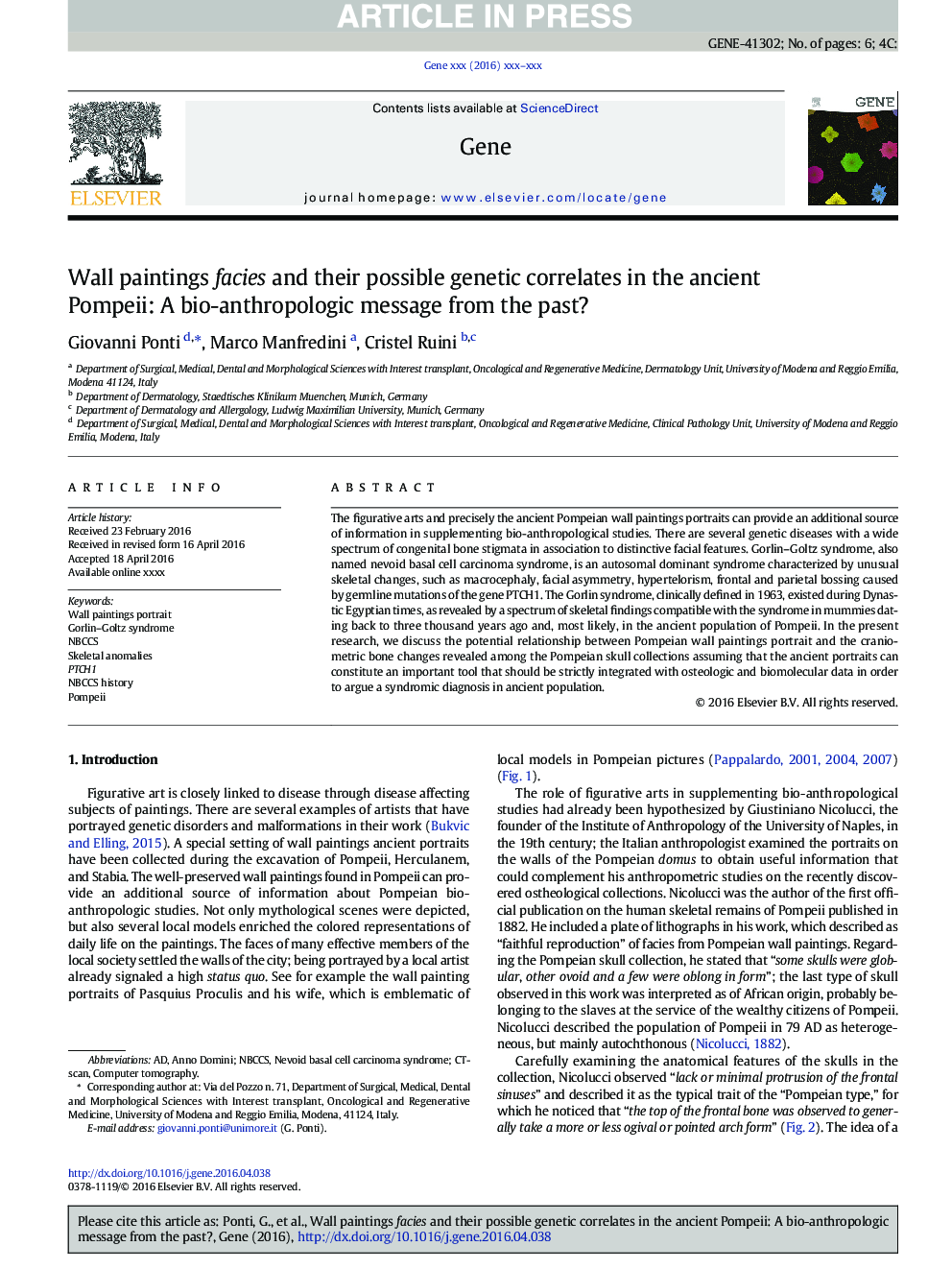| کد مقاله | کد نشریه | سال انتشار | مقاله انگلیسی | نسخه تمام متن |
|---|---|---|---|---|
| 5905120 | 1159835 | 2016 | 6 صفحه PDF | دانلود رایگان |
عنوان انگلیسی مقاله ISI
Wall paintings facies and their possible genetic correlates in the ancient Pompeii: A bio-anthropologic message from the past?
دانلود مقاله + سفارش ترجمه
دانلود مقاله ISI انگلیسی
رایگان برای ایرانیان
کلمات کلیدی
موضوعات مرتبط
علوم زیستی و بیوفناوری
بیوشیمی، ژنتیک و زیست شناسی مولکولی
ژنتیک
پیش نمایش صفحه اول مقاله

چکیده انگلیسی
The figurative arts and precisely the ancient Pompeian wall paintings portraits can provide an additional source of information in supplementing bio-anthropological studies. There are several genetic diseases with a wide spectrum of congenital bone stigmata in association to distinctive facial features. Gorlin-Goltz syndrome, also named nevoid basal cell carcinoma syndrome, is an autosomal dominant syndrome characterized by unusual skeletal changes, such as macrocephaly, facial asymmetry, hypertelorism, frontal and parietal bossing caused by germline mutations of the gene PTCH1. The Gorlin syndrome, clinically defined in 1963, existed during Dynastic Egyptian times, as revealed by a spectrum of skeletal findings compatible with the syndrome in mummies dating back to three thousand years ago and, most likely, in the ancient population of Pompeii. In the present research, we discuss the potential relationship between Pompeian wall paintings portrait and the cranio-metric bone changes revealed among the Pompeian skull collections assuming that the ancient portraits can constitute an important tool that should be strictly integrated with osteologic and biomolecular data in order to argue a syndromic diagnosis in ancient population.
ناشر
Database: Elsevier - ScienceDirect (ساینس دایرکت)
Journal: Gene - Volume 589, Issue 2, 10 September 2016, Pages 151-156
Journal: Gene - Volume 589, Issue 2, 10 September 2016, Pages 151-156
نویسندگان
Giovanni Ponti, Marco Manfredini, Cristel Ruini,